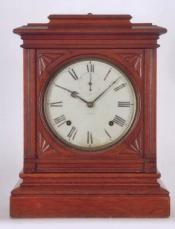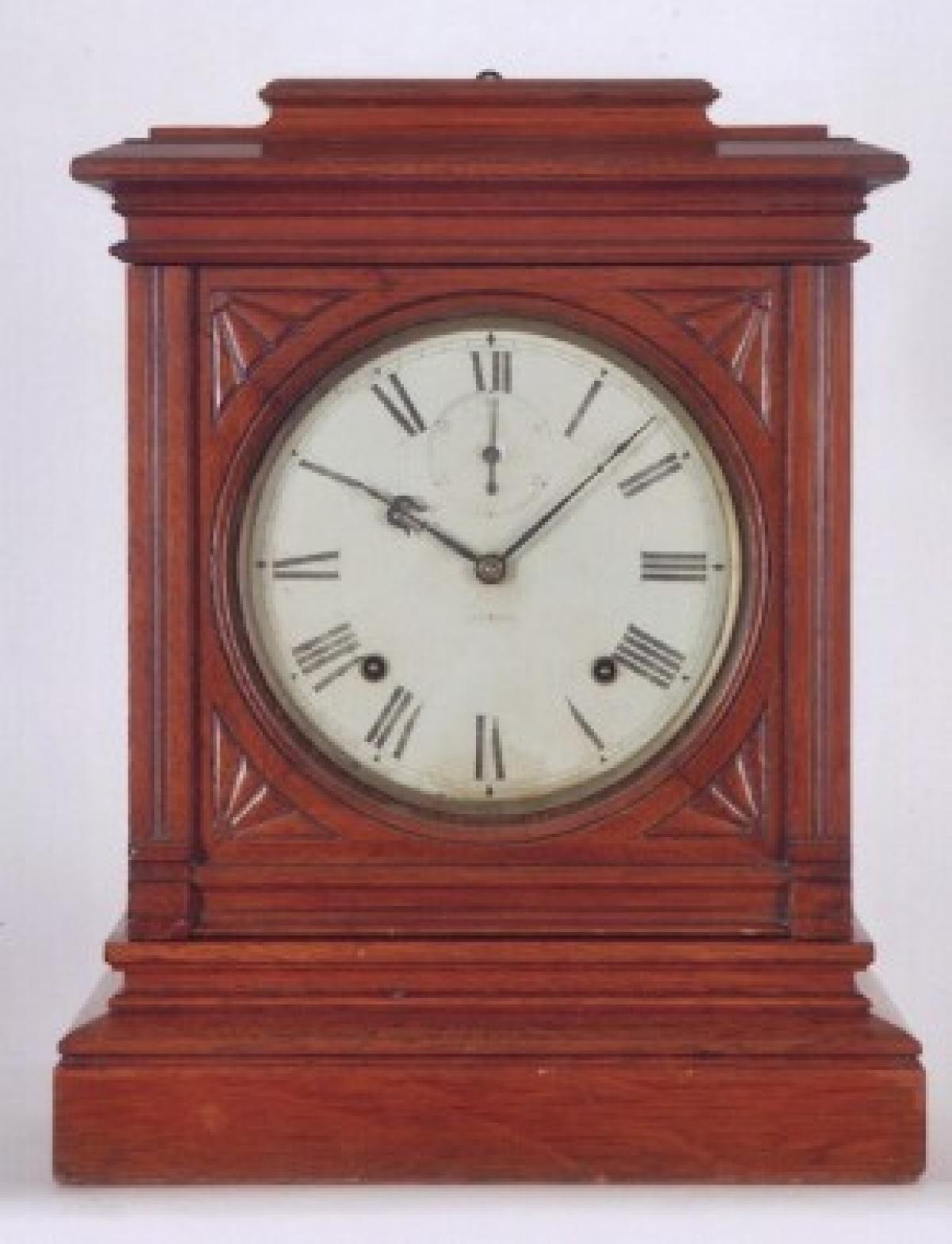Seth Thomas. The Hotel. Mantel clock. 213045.
This clock was made by the Seth Thomas Clock Company and was cataloged in 1900. It is called the “Hotel.” In today’s marketplace, it is a very difficult model to find. As a result, we have seen very few of these clocks for sale.
This example stands 18 inches tall, 14 inches wide, and just under 7 inches deep. The case is constructed in oak and retains a lovely golden color. (This model was also offered in walnut and mahogany.) The sides of the case are fitted with brass grates that allow the sound from the strike to escape the cabinet more easily. The front door of the clock is decorated with carved quarter fans that frame the fitted glass opening to the dial. A gilt trim ring is attached to the interior of the door. The door opens to a painted 8-inch dial. The dial pan retains its original painted surface. It is in good condition. The hours are indicated with Roman numerals. This dial also features a subsidiary seconds dial and the Maker’s trademark. The spring-driven eight-day, time-and-strike movement is constructed in brass. The front plate of the movement is die-stamped by the Maker. It features a Geneva Stop winding mechanism and a seconds hand. This movement is designed to run eight days on a full wind and to strike each hour on the hour on a wire gong. This wire gong is advertised as a Cathedral Bell. It sounds wonderful. The bell stand is die-stamped with a patent date. The pendulum bob is brass. The rod is made of wood.
This example is in very good condition and is ready to enjoy. This example was made in January of 1888 and is dated on the back of the case in the Seth Thomas code that reads, “A8811.”
Inventory number 213045.
Seth Thomas was born in Wolcott, Connecticut, in 1785. He was apprenticed as a carpenter and joiner and worked building houses and barns. He started in the clock business in 1807, working for clockmaker Eli Terry. Thomas formed a clock-making partnership in Plymouth, Connecticut, with Eli Terry and Silas Hoadley as Terry, Thomas & Hoadley. In 1810, he bought Terry’s clock business, making tall clocks with wooden movements. He chose to sell his partnership in 1812, moving in 1813 to Plymouth Hollow, Connecticut, where he set up a factory to make metal-movement clocks. In 1817, he added shelf and mantel clocks. By the mid-1840s, He successfully transitioned to brass movements and expanded his operations by building a brass rolling mill and a cotton factory. His clock business expanded until it became one of the “BIG Seven” in Connecticut and competed at every price point, from kitchen clocks to precision regulators. He made the clock that is used in Fireman’s Hall. He died in 1859, at which point the company was taken over by his son, Aaron, who added many styles and improvements after his father’s death. The company went out of business in the 1980s.






